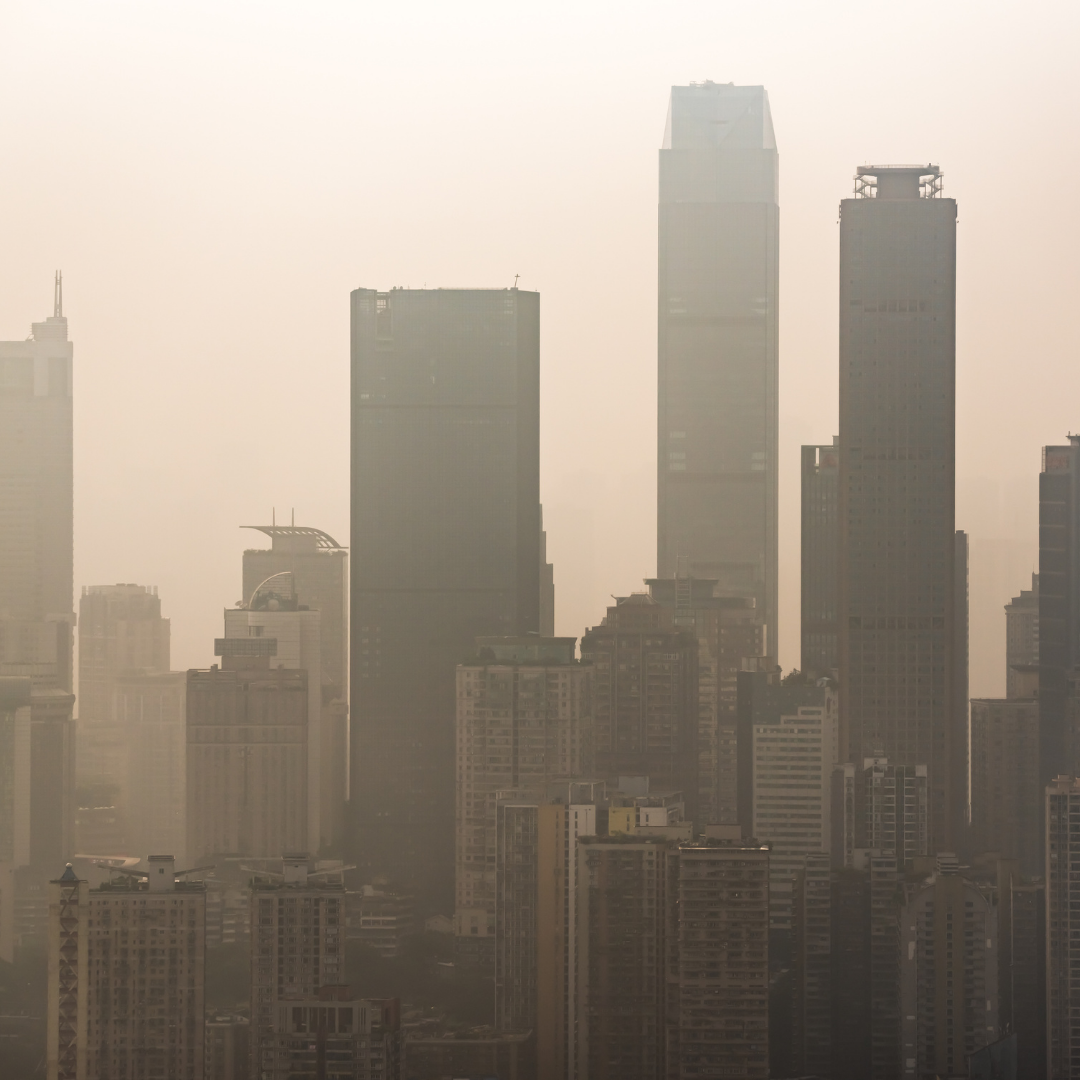Most people accept their environments as they are. If you live in the city, smog is just a part of the experience right? Wildfires come and go each summer, so what’s the big deal?
Unfortunately, it can be a big deal. Air pollution is a silent killer. According to WHO, air pollution kills an estimated seven million people worldwide every year. Its data also shows that almost all of the global population (99%) breathe air that exceeds its guideline limits containing high levels of pollutants.

And with more smog and more wildfires increasing every year, monitoring your air quality is important.
So today, we’re breaking down what air pollution is, the signs and symptoms that it may be impacting your health, and what you can do to improve your air quality.
What is air pollution?
The technical description of air pollution is the contamination of an indoor or outdoor environment by a chemical, physical or biological agent that modifies the natural characteristics of the atmosphere.
Common outdoor pollutants come from motor vehicles, industrial facilities, and forest fires.
Your home isn’t exempt from air pollution. Sources of indoor air pollution are household combustion devices (like stoves), cleaning products, construction materials (like asbestos, formaldehyde, and lead), tobacco smoke, mold and pollen. Yikes, there are actually a lot more indoor air pollutants than you may think.
Which pollutants should you be extra mindful of?
The U.S. Environmental Protection Agency (EPA) monitors six types of air pollutants found inside and outside and are known to cause serious health issues. Here are the pollutants your should avoid:
-
Carbon Monoxide: Carbon monoxide exposure often comes from fires, boilers, central heating systems, water heaters, cookers, and open fires that use gas, oil, coal, and wood.
-
Lead: Lead dust is the most common way that people are exposed to lead. Inside the home, most lead dust comes from chipping and flaking paint or when paint is scraped, sanded, or disturbed during home remodeling.
-
Nitrogen Oxides: Nitrogen oxides are emitted by automobiles, trucks and various non-road vehicles (construction equipment, boats, etc.) as well as industrial sources such as power plants, industrial boilers, cement kilns, and turbines.
-
Particulate Matter: Examples of particulate matter are dust, dirt, soot, and smoke. Some are large enough to be seen with the naked eye.
-
Ground-level ozone: Cars, power plants, industrial boilers, refineries, and chemical plants are all common sources of ground-level ozone pollution, as well as paints, cleaners and solvents.
- Sulfur dioxides: Sulfur dioxides come from the burning of fossil fuels—coal, oil, and diesel—or other materials containing sulfur.
What are the health impacts of air pollution?
The most common health impacts of air pollution are on your breathing, lungs, and heart. It has also been linked to infertility issues and mental health challenges in children. (Check out this post for more on improving the indoor air quality for your baby.)
Let’s discuss the heart and respiratory impacts in greater detail. Common breathing and lung conditions are asthma, allergies, and chronic obstructive pulmonary disease. Common heart conditions are angina, arrhythmia, heart attack, heart failure and hypertension.
Not what you have in mind, do you?

Here are some tell-tale signs and symptoms that you’re affected by air pollution:
- tiredness
- headache or dizziness
- coughing and sneezing
- wheezing or difficulty breathing
- more mucus in the nose or throat
- dry or irritated eyes, nose, throat and skin
If you’re experiencing any of the above symptoms, it may be a good idea to investigate your exposure to air pollutants. How? Read below to find out!
How can I monitor and improve my air quality?
While you may not have control over your outdoor environment, you can control your indoor air quality. We suggest investing in indoor air quality trackers to properly assess the quality of air in your home. If you’ve recently moved, this is especially important. Many folks develop allergies after moving—and it may be due to your indoor air quality.
To improve your air quality, we recommend installing an air purifier. There are both compact and larger options to suit your needs best—reducing your exposure to air pollutants and keeping you healthy.


